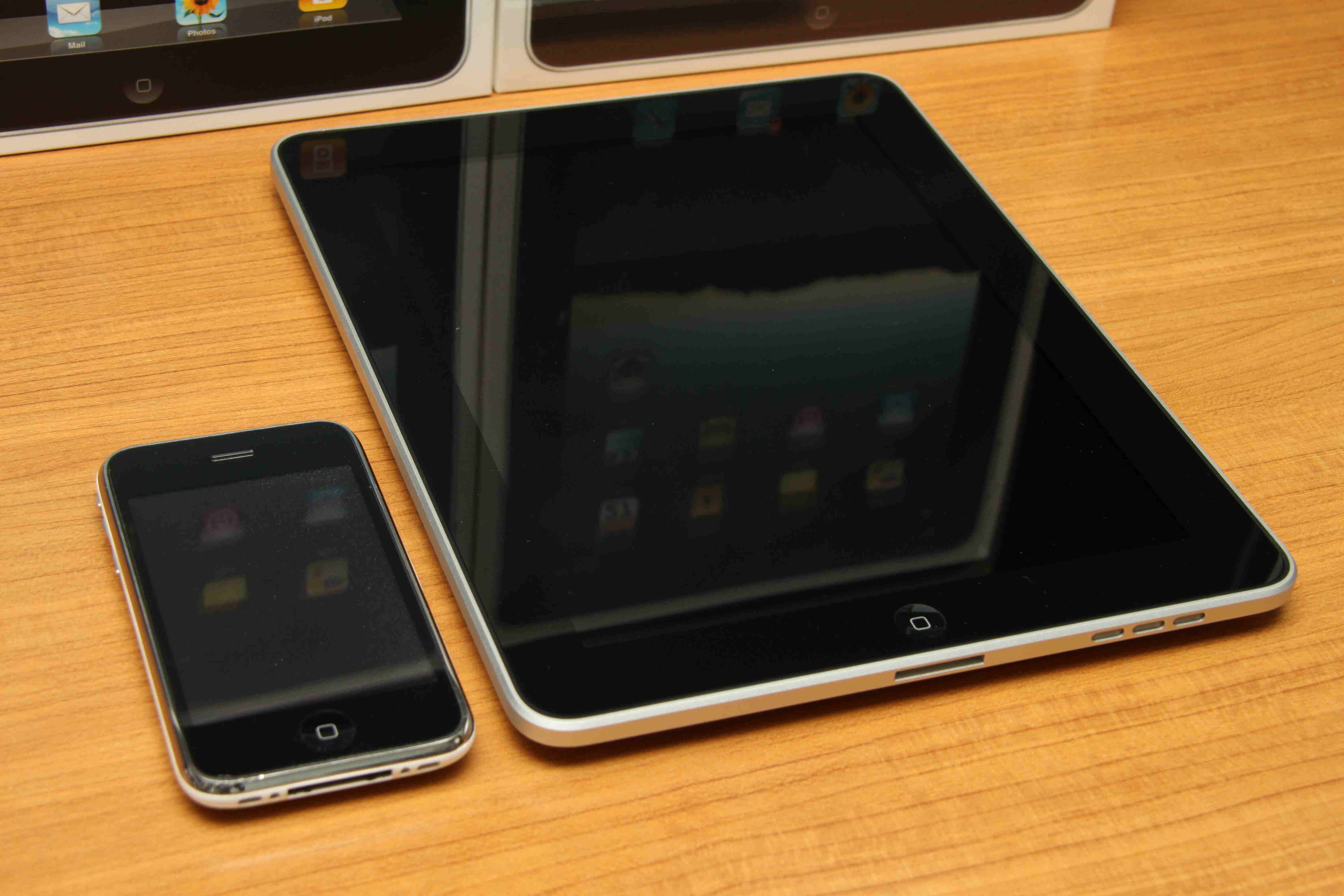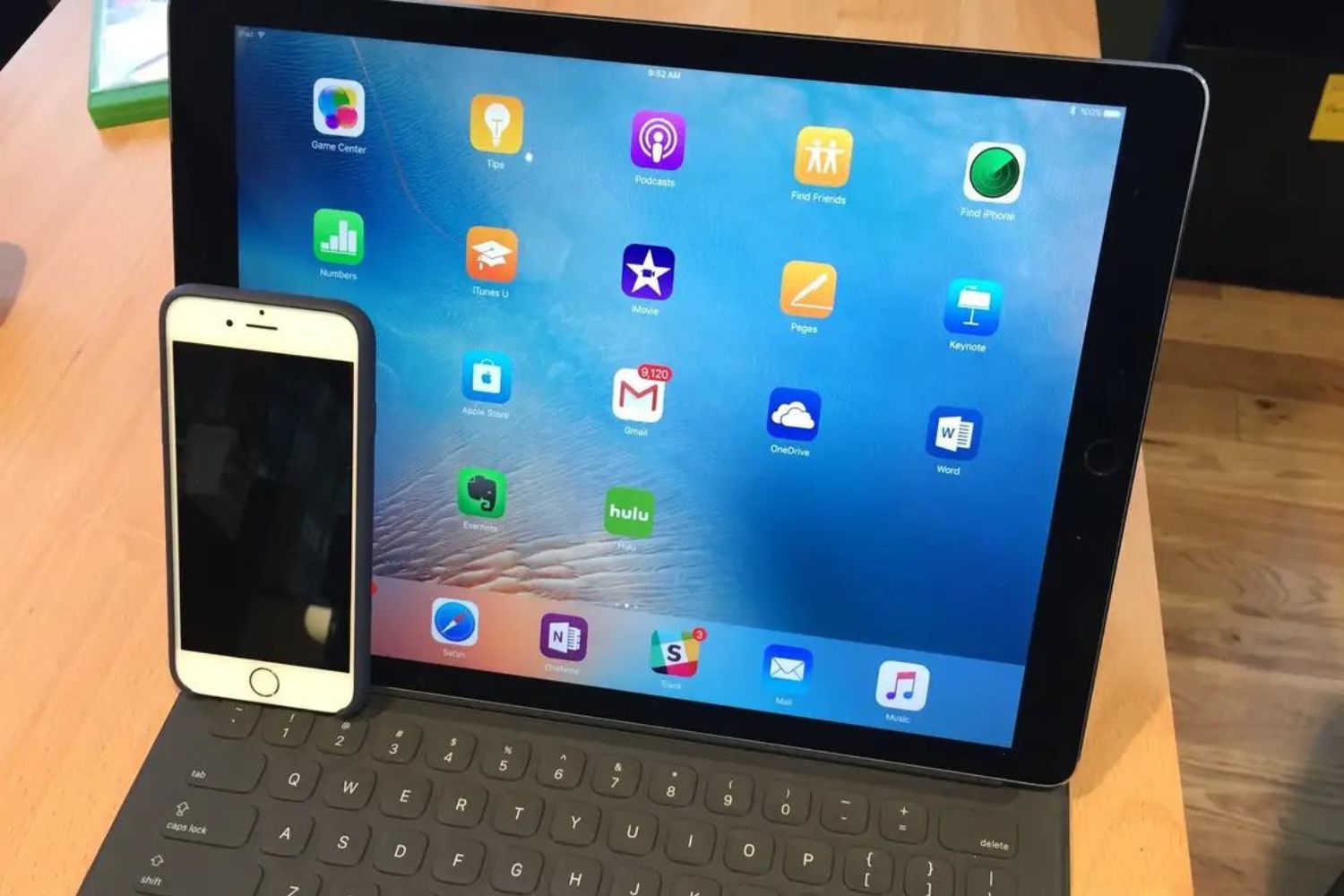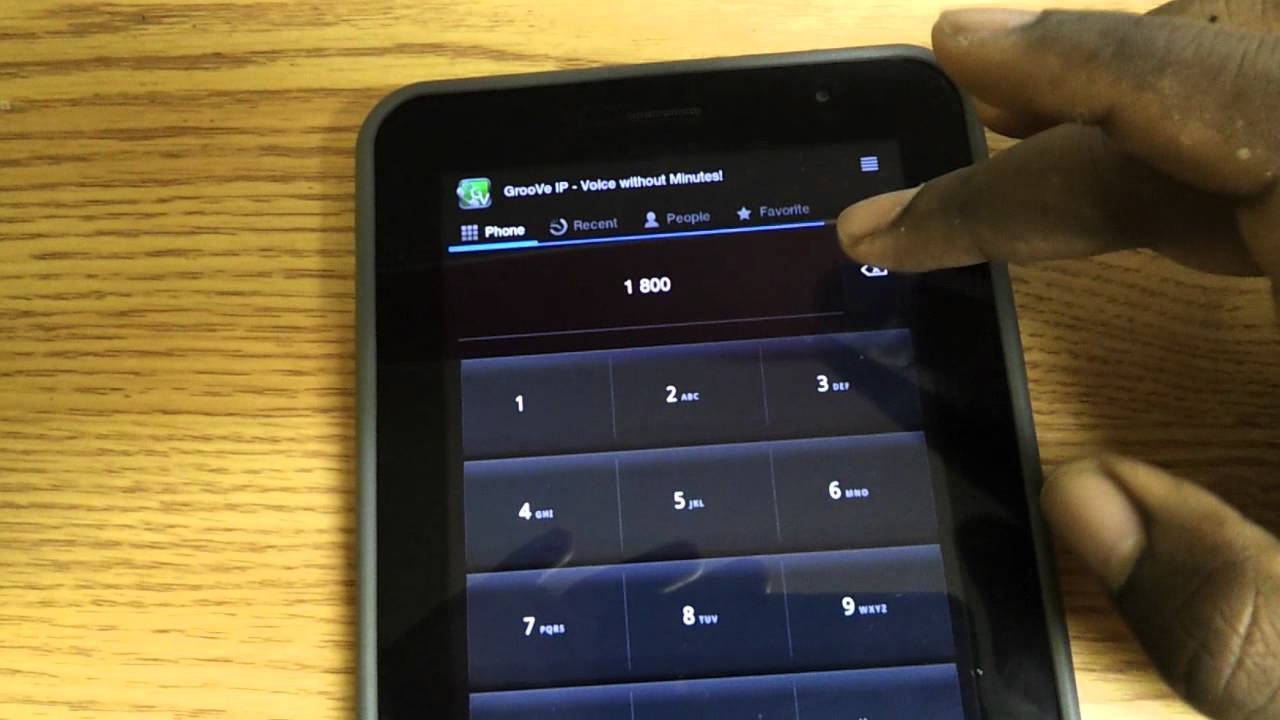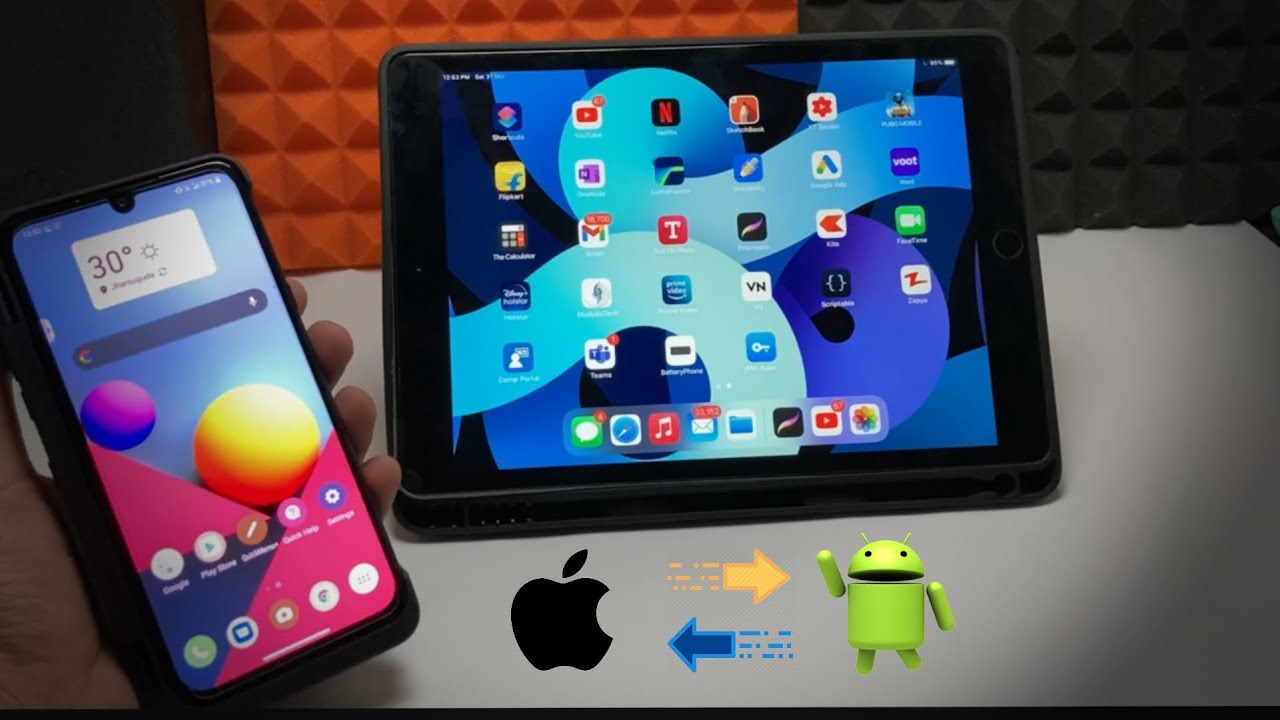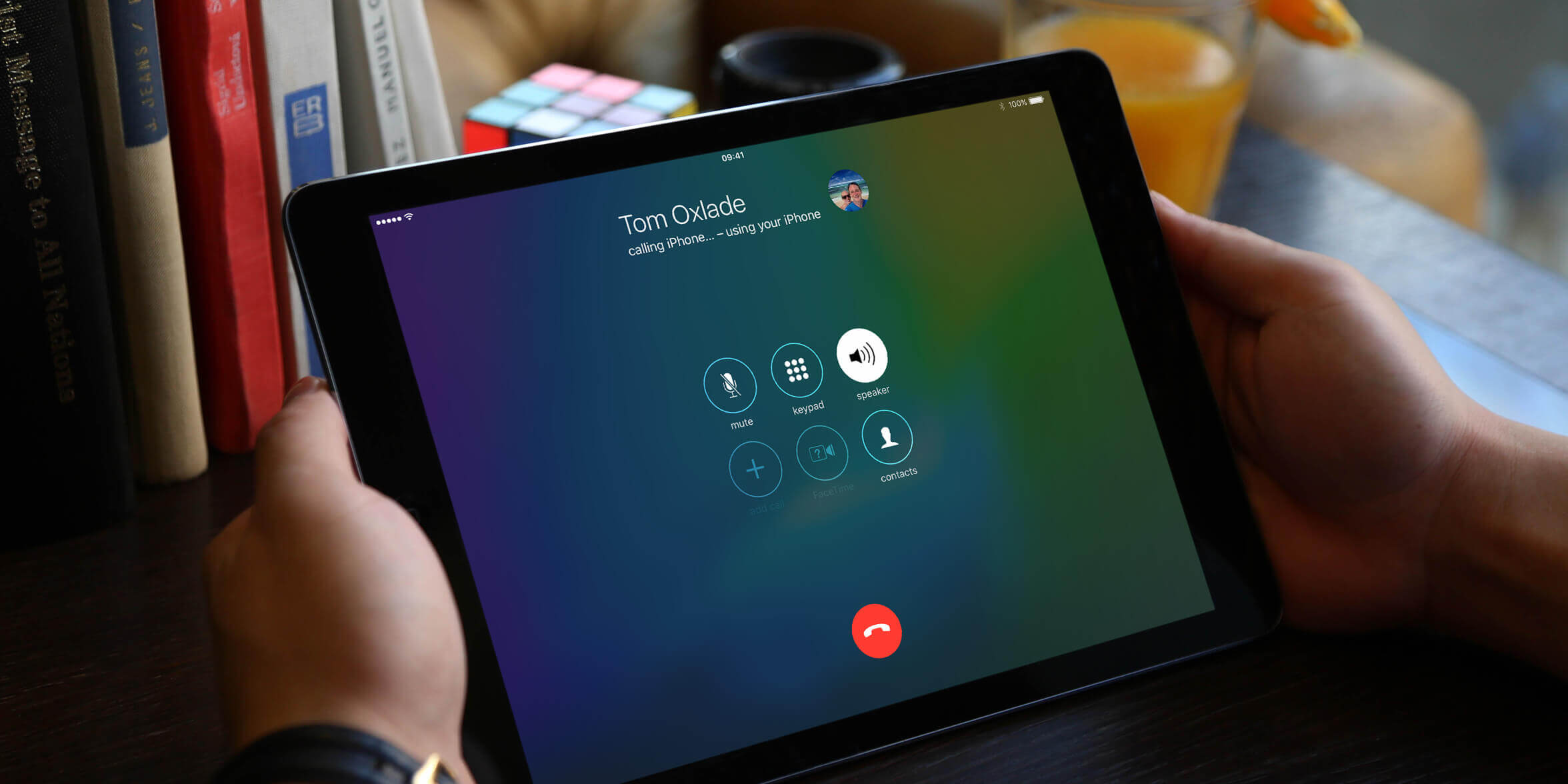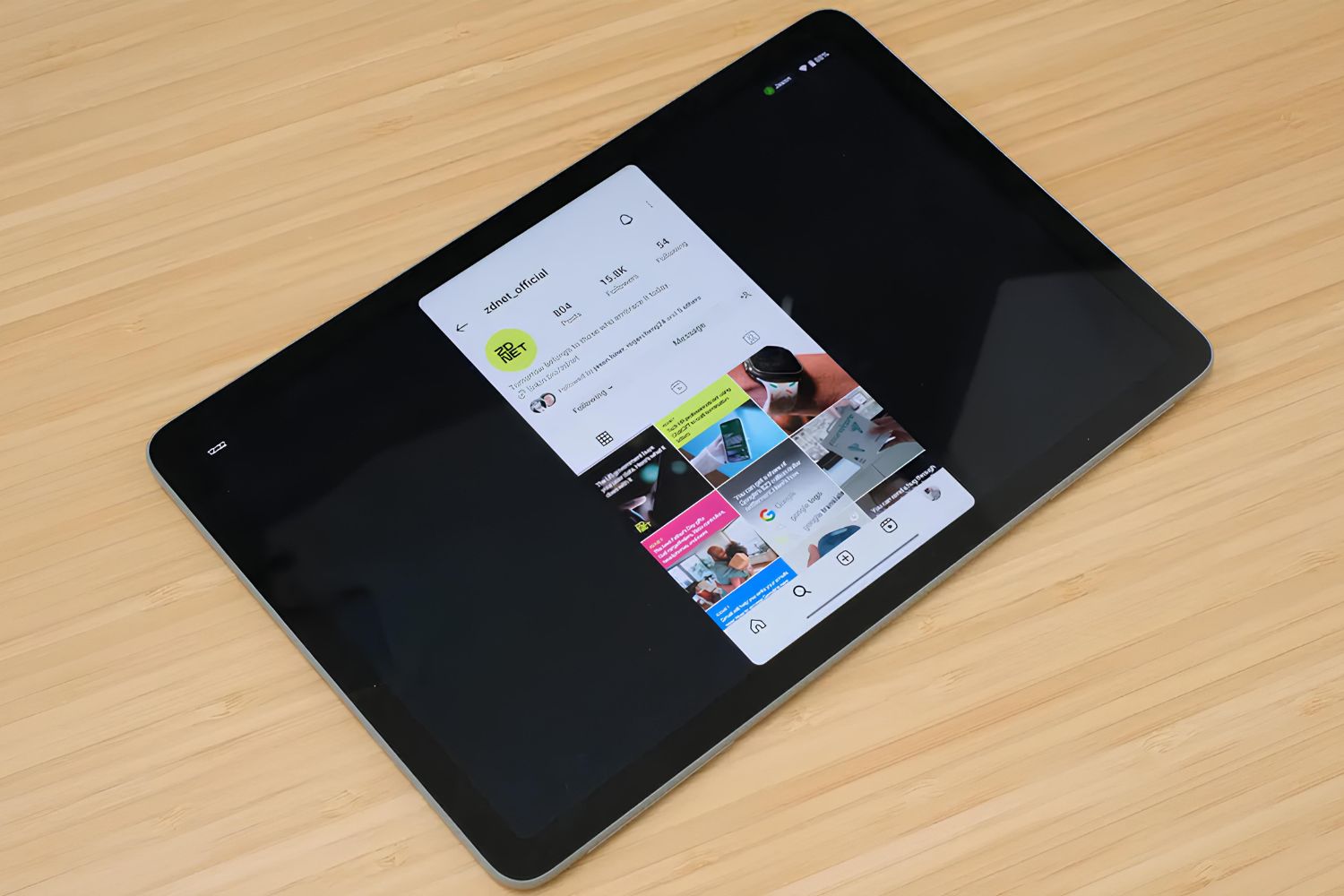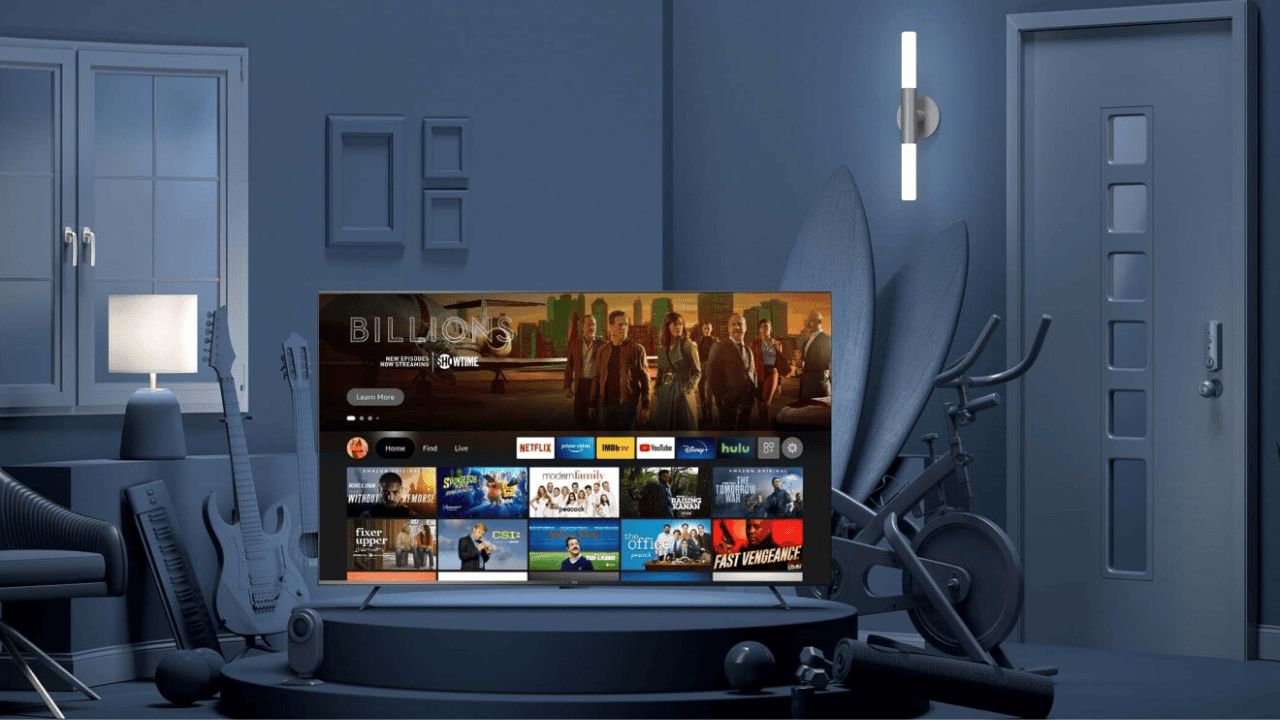Introduction
Connecting your phone to your tablet opens up a whole new world of convenience and possibilities. Whether you want to share media and files, mirror your phone’s screen, or simply have a seamless experience across devices, establishing a connection between your phone and tablet is essential. In this article, we will explore various methods and techniques to help you connect your phone to your tablet effortlessly.
Having a phone-to-tablet connection allows you to leverage the strengths of both devices and enhance their functionalities. For instance, you can access your phone’s internet connection on your tablet when you’re on the go or share photos and videos with a larger screen for a better viewing experience. By connecting your phone and tablet, you can also synchronize files, messages, and apps, making it easier to manage and access your digital life across devices.
There are several methods available to establish a connection between your phone and tablet. You can use Bluetooth, Wi-Fi Direct, a USB cable, or even employ cross-device copy and paste functionality. Each method offers distinct advantages and is suited for different purposes, so it’s important to understand them in detail.
In the following sections, we will explore step-by-step instructions on how to connect your phone and tablet using various methods, as well as share some tips and tricks to ensure a seamless experience. Whether you’re an Android or iOS user, these methods can be applied to connect your devices, allowing you to enjoy an integrated experience and maximize the potential of your technology.
So, if you’re ready to connect your phone and tablet, let’s dive into the different methods and techniques that will enable you to enjoy the benefits of a synchronized and interconnected digital ecosystem.
What is Phone-to-Tablet Connection?
Phone-to-tablet connection refers to the process of establishing a link between your smartphone and tablet to enable seamless communication and sharing of data between the two devices. This connection allows you to leverage the capabilities of both devices and enhance your overall digital experience. Whether you want to transfer files, share media, mirror your phone’s screen, or synchronize your data, a phone-to-tablet connection is essential.
One of the most common reasons for establishing a phone-to-tablet connection is to share media files such as photos, videos, and music. By connecting your phone and tablet, you can easily transfer files between the two devices and enjoy them on a larger screen or with better sound quality. This is especially useful when you want to show pictures or videos to a group of people or enjoy your favorite music on a tablet’s bigger speakers.
Another advantage of a phone-to-tablet connection is the ability to mirror your phone’s screen on your tablet. This feature allows you to view and control your phone’s interface directly from your tablet’s screen, providing a more comfortable and convenient experience. You can access your phone’s apps, messages, and media without having to switch between devices, making multitasking a breeze.
Furthermore, a phone-to-tablet connection enables synchronization of data and settings between your devices. This means that any changes you make on either your phone or tablet will be reflected on the other device. For example, if you add a new contact on your phone, it will automatically appear on your tablet. This synchronization ensures that you have access to the same information across all your devices, making it easier to stay organized and up to date.
Overall, a phone-to-tablet connection offers a range of benefits, including seamless media sharing, screen mirroring, and data synchronization. It allows you to make the most out of your devices by leveraging their combined functionalities. In the following sections, we will explore different methods and techniques to connect your phone to your tablet, enabling you to enjoy these advantages and enhance your digital experience.
Using Bluetooth
Bluetooth is a wireless technology that allows for short-range communication between devices. It is a popular method for connecting phones and tablets due to its convenience and ease of use. To connect your phone and tablet using Bluetooth, follow these steps:
- On both your phone and tablet, enable Bluetooth. This can usually be done by going to the settings menu and selecting the Bluetooth option.
- On your phone, go to the Bluetooth settings and tap on the option to “Pair new device” or “Scan for devices”.
- On your tablet, go to the Bluetooth settings and tap on the option to “Scan for devices”. Your phone should appear in the list of available devices.
- Select your phone’s name from the list on your tablet, and your tablet’s name from the list on your phone. This will initiate the pairing process.
- On both devices, you will be prompted to confirm the pairing. Once confirmed, your phone and tablet will be connected via Bluetooth.
Once connected via Bluetooth, you can now start utilizing the benefits of this wireless connection. You can easily transfer files between your phone and tablet by selecting the desired files and choosing the option to share via Bluetooth. You can also listen to music stored on your phone through your tablet’s speakers or use your tablet as a remote control for media playback on your phone.
It’s important to note that Bluetooth connections have a limited range, typically around 30 feet or 10 meters. Make sure that your phone and tablet are within this range to maintain a stable connection. Additionally, Bluetooth connections may have slower transfer speeds compared to other methods, so it’s best suited for smaller files or tasks that don’t require high-speed data transfer.
Overall, Bluetooth is a convenient and widely supported method for connecting your phone and tablet. It allows for easy file sharing, media playback, and remote control functionalities. The next section will explore another method, Wi-Fi Direct, which provides faster transfer speeds and a more extensive range for connecting your devices.
Pairing Your Phone and Tablet
Before you can establish a connection between your phone and tablet, you need to pair the two devices. Pairing ensures that the devices recognize and trust each other, enabling a secure and stable connection. Here’s how you can pair your phone and tablet:
- Make sure that Bluetooth is enabled on both your phone and tablet. You can usually enable Bluetooth by going to the settings menu and selecting the Bluetooth option.
- On your phone, navigate to the Bluetooth settings and tap on the option to “Pair new device” or “Scan for devices”.
- On your tablet, go to the Bluetooth settings and tap on the option to “Scan for devices”. Your phone should appear in the list of available devices.
- Select your phone’s name from the list on your tablet, and your tablet’s name from the list on your phone. This will initiate the pairing process.
- The devices will display a pairing code or ask you to confirm a code. Make sure that the codes displayed on both devices match. This step ensures that you are pairing the correct devices and adds an extra layer of security to the connection.
- Once you have confirmed the pairing code, your phone and tablet are now paired. They will remember each other’s details and connect automatically whenever they are in range and Bluetooth is enabled.
It’s important to note that pairing your phone and tablet via Bluetooth is a one-time process. Once paired, the devices will recognize and trust each other, making subsequent connections faster and more seamless. However, if you want to connect to a different tablet or phone in the future, you will need to go through the pairing process again.
Pairing your phone and tablet is a crucial step in establishing a stable and secure connection. It ensures that the devices communicate effectively and reduces the risk of unauthorized access. With the pairing process complete, you can now move on to exploring the various ways you can share media and files between your phone and tablet.
Sharing Media and Files
Once you have connected your phone and tablet, you can easily share media and files between the two devices. Whether you want to transfer photos, videos, documents, or any other type of file, there are several methods you can use to accomplish this. Let’s explore some popular methods for sharing media and files between your phone and tablet:
1. Bluetooth: If you have paired your phone and tablet via Bluetooth, you can use this wireless connection to transfer files. Simply select the files you want to transfer on one device, choose the option to share via Bluetooth, and select the paired device as the recipient. This method is suitable for smaller files but may be slower compared to other options.
2. Wi-Fi Direct: Wi-Fi Direct allows for high-speed file transfer between devices without the need for an internet connection. Both your phone and tablet need to support Wi-Fi Direct for this method to work. On your phone, enable Wi-Fi Direct in the settings menu, and on your tablet, search for nearby devices. Once you find your phone, select it, and follow the prompts to establish a connection. Once connected, you can easily transfer files between the two devices at fast speeds.
3. Cloud Storage: If you have accounts with cloud storage services such as Google Drive, Dropbox, or OneDrive, you can upload your files to the cloud and access them from both your phone and tablet. Simply upload the files you want to share to your cloud storage account on one device, and you can then access and download them on the other device. This method is especially useful for sharing larger files or when you want to access your files from anywhere.
4. File Transfer Apps: There are various file transfer apps available that allow you to share files between your phone and tablet over Wi-Fi. These apps create a local network between your devices, allowing for fast and easy file transfer. Some popular options include SHAREit, Xender, and Send Anywhere. Install the app on both your phone and tablet, follow the instructions to establish a connection, and then transfer files between the two devices.
By utilizing these methods, you can easily share photos, videos, documents, and other files between your phone and tablet. Choose the method that best suits your needs and preferences, and enjoy the seamless transfer of media and files across your devices.
Using Wi-Fi Direct
Wi-Fi Direct is a convenient and efficient method for connecting your phone and tablet. It allows for direct communication between the two devices without requiring an internet connection or a separate Wi-Fi network. Wi-Fi Direct enables faster transfer speeds and a more extensive range compared to Bluetooth, making it ideal for sharing large files or establishing a stable connection. Here’s how you can use Wi-Fi Direct to connect your phone and tablet:
- On both your phone and tablet, enable Wi-Fi Direct. This can usually be done through the settings menu, under the Wi-Fi or Network options.
- On your tablet, go to the Wi-Fi settings, and you should see a list of available devices.
- On your phone, go to the Wi-Fi settings and tap on the option to “Scan for devices”. Your tablet should appear in the list of available devices.
- Select your tablet from the list on your phone, and your phone from the list on your tablet. This will initiate the connection process.
- Both devices will display a prompt asking you to confirm the connection. Once confirmed, your phone and tablet will be connected via Wi-Fi Direct.
Once connected via Wi-Fi Direct, you can start taking advantage of the benefits it offers. You can now transfer files between your phone and tablet at faster speeds, share media seamlessly, or even use your tablet as a remote display for your phone’s screen. Wi-Fi Direct also allows for simultaneous connections, meaning you can connect multiple devices to create a network for sharing media or collaborating on projects.
It’s important to note that Wi-Fi Direct connections have a limited range, similar to traditional Wi-Fi networks. Make sure that your phone and tablet are within this range to maintain a stable connection. Additionally, some devices may refer to Wi-Fi Direct by different names, such as “Quick Connect” or “Wi-Fi Direct Mode.” Consult your device’s user manual or settings menu if you are having difficulty locating the Wi-Fi Direct feature.
By utilizing Wi-Fi Direct, you can establish a direct connection between your phone and tablet, enabling fast and reliable communication. Whether you want to share files, stream media, or collaborate with others, Wi-Fi Direct provides a convenient and efficient solution. In the next section, we will explore another method for connecting your phone and tablet – establishing a hotspot.
Establishing a Hotspot
Another method for connecting your phone and tablet is by establishing a hotspot on your phone. A hotspot turns your phone into a portable Wi-Fi network, allowing other devices, such as your tablet, to connect to it and access the internet. This method is useful when you don’t have access to a traditional Wi-Fi network or if you want to share your phone’s internet connection with your tablet. Here’s how you can establish a hotspot and connect your phone and tablet:
- On your phone, go to the settings menu and find the “Hotspot” or “Tethering” option. The name of this option may vary depending on your phone’s manufacturer and operating system.
- Enable the hotspot or tethering feature on your phone. You may need to configure the hotspot settings, such as the network name (SSID) and password. Make sure to choose a secure password to prevent unauthorized access.
- On your tablet, go to the Wi-Fi settings and scan for available networks. Your phone’s hotspot should appear in the list of networks.
- Select your phone’s hotspot from the list on your tablet and enter the password if prompted. Your tablet will now connect to your phone’s hotspot.
- Your tablet can now access the internet through your phone’s data connection. You can use web browsing, stream media, or use any internet-dependent applications on your tablet as long as the hotspot is active on your phone.
Establishing a hotspot on your phone allows for a versatile and convenient connection between your phone and tablet. You can stay connected and access the internet even in areas without traditional Wi-Fi networks, such as when you’re traveling or in a remote location. It also eliminates the need for a separate internet connection for your tablet, as it can leverage your phone’s existing data connection.
Keep in mind that using a hotspot may consume your phone’s data plan, so it’s important to monitor your data usage and consider any additional charges that may apply. Be mindful of your data limits and avoid excessive data consumption if you have a limited data plan.
By establishing a hotspot on your phone, you can create a personal Wi-Fi network that allows your tablet to access the internet and enjoy all the benefits of online connectivity. In the next section, we will explore another method to connect your phone and tablet – using a USB cable.
Using a USB Cable
If you prefer a wired connection or want to transfer files between your phone and tablet quickly, using a USB cable is a reliable and straightforward method. By connecting your phone and tablet with a USB cable, you can establish a direct connection and transfer files without the need for a network or additional software. Here’s how you can connect your phone and tablet using a USB cable:
- Obtain a compatible USB cable that can connect to both your phone and tablet. Typically, this will be a USB-A to USB-C or USB-A to micro-USB cable, depending on the charging ports of your devices.
- Connect one end of the USB cable to your phone and the other end to your tablet. Ensure that the connections are secure.
- On your phone, you may be prompted to choose the type of USB connection. Select the option that enables file transfer or media transfer mode.
- On your tablet, the connected phone should appear as a storage device or as a connected device in the file manager or system settings.
- Open the file manager or explore the storage on your tablet, and you should be able to access the files and folders on your phone.
- Now, you can transfer files between your phone and tablet by simply copying and pasting or dragging and dropping the desired files.
Using a USB cable provides a direct and reliable connection between your phone and tablet. It allows for fast file transfer speeds, especially when dealing with larger files or a large number of files. This method is particularly useful when you want to backup or transfer media files such as photos, videos, or music from one device to another.
It’s important to note that some devices may require additional drivers or software for the USB connection to work correctly. These drivers are usually available on the manufacturer’s website or can be installed automatically when you connect the devices. If you encounter any connection issues, refer to the device manuals or online resources for troubleshooting steps or driver downloads.
By using a USB cable, you can establish a quick and reliable connection between your phone and tablet. This method provides a straightforward way to transfer files between devices without the need for an internet connection. In the next section, we will explore how to mirror and control your phone’s screen on your tablet.
Mirror and Control Your Phone’s Screen
Being able to mirror and control your phone’s screen on your tablet can provide a seamless and convenient experience. It allows you to access your phone’s apps, messages, and media directly from your tablet’s larger screen, eliminating the need to switch between devices. There are several methods available to mirror and control your phone’s screen on your tablet, depending on your devices’ compatibility and operating systems. Here are a few common methods to consider:
1. Manufacturer-Specific Apps: Some phone manufacturers provide their own apps or features that allow you to mirror and control your phone’s screen on your tablet. For example, Samsung offers a feature called “Smart View” or “Screen Mirroring” that allows you to wirelessly mirror your phone’s screen on a compatible Samsung tablet. Look for similar apps or features from your phone and tablet manufacturer to explore this option.
2. Third-Party Screen Mirroring Apps: There are numerous third-party apps available on app stores that can help you mirror and control your phone’s screen on your tablet. Examples include AirDroid, Vysor, and TeamViewer QuickSupport. Install the app on both your phone and tablet, follow the instructions to establish a connection, and you’ll be able to see and control your phone’s screen directly from your tablet.
3. Chromecast or Miracast: If your phone and tablet support Chromecast or Miracast, you can use these technologies to mirror your phone’s screen wirelessly on your tablet. Both Chromecast and Miracast require a compatible device, such as a Chromecast dongle or a Miracast receiver, plugged into your tablet’s HDMI port. Once set up, you can cast your phone’s screen to your tablet and control it from there.
4. HDMI Cable: If both your phone and tablet have HDMI ports, you can directly connect them using an HDMI cable. Simply connect one end of the cable to your phone and the other end to your tablet’s HDMI port. Make sure to select the correct HDMI input on your tablet, and you should see your phone’s screen mirrored on your tablet.
The ability to mirror and control your phone’s screen on your tablet opens up a world of possibilities. It allows you to enjoy a larger display for media playback, conveniently navigate your phone’s interface, or even use your tablet as a second monitor for multitasking. Explore the different methods available and choose the one that best suits your devices and preferences.
In the next section, we will look at a useful feature called cross-device copy and paste, which allows you to easily transfer text or links between your phone and tablet.
Using Cross-Device Copy and Paste
Cross-device copy and paste is a convenient feature that allows you to easily transfer text, links, or other snippets of information between your phone and tablet. It eliminates the need for manual typing or sharing information through other methods. Whether you want to copy a link from your phone and paste it on your tablet, or vice versa, cross-device copy and paste simplifies the process. Here’s how you can use this feature:
1. Ensure device compatibility: Check if your phone and tablet support cross-device copy and paste. This feature may depend on the operating system and versions running on your devices. For example, devices using iOS and iPadOS can take advantage of the Universal Clipboard, while Android devices may require specific app support or third-party solutions.
2. Enable the feature: Depending on your devices and operating systems, you may need to enable specific settings or features to enable cross-device copy and paste. On iOS and iPadOS devices, ensure that Handoff is enabled in the settings menu. On Android devices, look for apps that offer cross-device copy and paste capabilities, such as Microsoft’s Your Phone Companion or third-party clipboard managers.
3. Copy and paste: Once the feature is enabled, you can start using cross-device copy and paste. For example, if you come across a link on your phone that you want to open on your tablet, simply copy the link on your phone as you normally would. Then, on your tablet, paste the link into the desired app or browser. The copied content should be available across your devices, allowing for seamless copying and pasting.
Cross-device copy and paste simplifies workflows by eliminating the need to manually transfer information or type on multiple devices. Whether you’re working on a document, sharing a quote, or sending a long text message, this feature makes it much easier to switch between devices and seamlessly transfer content.
It’s important to note that the availability and functionality of cross-device copy and paste may vary depending on the devices, operating systems, and apps you are using. Be sure to explore the options and settings available on your specific devices to make the most of this feature.
Cross-device copy and paste adds a level of convenience to your workflow, allowing you to effortlessly transfer text, links, and more between your phone and tablet. In the next section, we will provide some tips for ensuring a seamless connection between your devices.
Tips for a Seamless Connection
To ensure a smooth and uninterrupted connection between your phone and tablet, it’s essential to keep a few tips in mind. By following these tips, you can maintain a seamless connection and maximize the benefits of connecting your devices. Here are some tips to consider:
1. Keep devices updated: Regularly update the operating systems and apps on both your phone and tablet. Software updates often include bug fixes, security enhancements, and performance improvements that can optimize the device’s connectivity and compatibility with each other.
2. Check for device compatibility: Before attempting to connect your phone and tablet, ensure that they are compatible with each other. Check the manufacturer’s specifications and documentation to confirm if the devices can establish a connection using the desired methods, such as Bluetooth, Wi-Fi Direct, or USB.
3. Maintain sufficient battery levels: For wireless connections, such as Bluetooth or Wi-Fi Direct, ensure that both your phone and tablet have sufficient battery levels for a stable connection. Low battery levels can negatively impact the connection quality and may lead to intermittent disconnections.
4. Move closer for better signal: If you’re experiencing a weak or unstable connection, try moving your phone and tablet closer to each other to improve the signal strength. This is particularly relevant when using Bluetooth or Wi-Fi Direct, as these connections have limited range.
5. Clear cache and data: Occasionally, clearing the cache and data of the apps related to the connection (e.g., Bluetooth or Wi-Fi settings) can help resolve any issues or conflicts that may affect the connection between your phone and tablet. This can be done through the settings menu on your devices.
6. Restart devices if necessary: If you’re experiencing persistent connection issues, try restarting both your phone and tablet. Sometimes, a simple restart can resolve minor software glitches and restore a stable connection.
7. Ensure proper cable and port connections: When using a USB cable, make sure it is securely connected to both your phone and tablet. Check for any debris or physical damage that may prevent a proper connection. Additionally, ensure that you are using the correct ports and cables compatible with your devices.
8. Avoid interference: Interference from other electronic devices or obstacles such as walls and furniture can affect the signal strength and stability of wireless connections. Try to connect your phone and tablet in an environment with minimal interference to ensure a reliable connection.
By following these tips, you can enhance the connection between your phone and tablet, ensuring a seamless experience for transferring files, sharing media, or using remote control functionalities. Experiment with different methods and troubleshoot any issues to find the optimal setup for your devices.
With a seamless connection between your phone and tablet, you can enjoy the convenience and versatility of having your digital world synchronized and accessible across multiple devices. Whether you’re working, streaming media, or simply enjoying the freedom of interconnected technology, the connection between your phone and tablet opens up a world of possibilities.
Conclusion
Connecting your phone and tablet allows you to unlock a world of convenience, efficiency, and enhanced functionality. Whether it’s sharing media, transferring files, mirroring your phone’s screen, or seamlessly accessing information across devices, establishing a connection between your phone and tablet is a valuable asset.
Throughout this article, we explored various methods to connect your phone and tablet. From using Bluetooth for wireless file sharing to establishing a hotspot for internet access, each method offers unique benefits and advantages. Wi-Fi Direct allows for faster file transfer speeds, while a USB cable provides a reliable and quick connection. Additionally, mirroring your phone’s screen on your tablet and utilizing cross-device copy and paste features enhance the versatility of your devices.
To ensure a seamless connection, it’s important to keep your devices updated, maintain sufficient battery levels, and troubleshoot any issues that may arise. By following these tips, you can optimize the connection quality between your phone and tablet and enjoy a smooth and uninterrupted experience.
Connecting your phone and tablet creates a synchronized and interconnected digital ecosystem, where you can seamlessly access and manage your data, media, and apps. It eliminates the need to switch between devices, streamlines your workflow, and enhances your overall productivity and enjoyment.
So, whether you’re a professional looking to work across devices, a multimedia enthusiast wanting to enjoy content on a larger screen, or simply someone who values the convenience of an interconnected digital experience, take the time to connect your phone and tablet. Discover the possibilities, streamline your digital life, and unlock the full potential of your technology.







